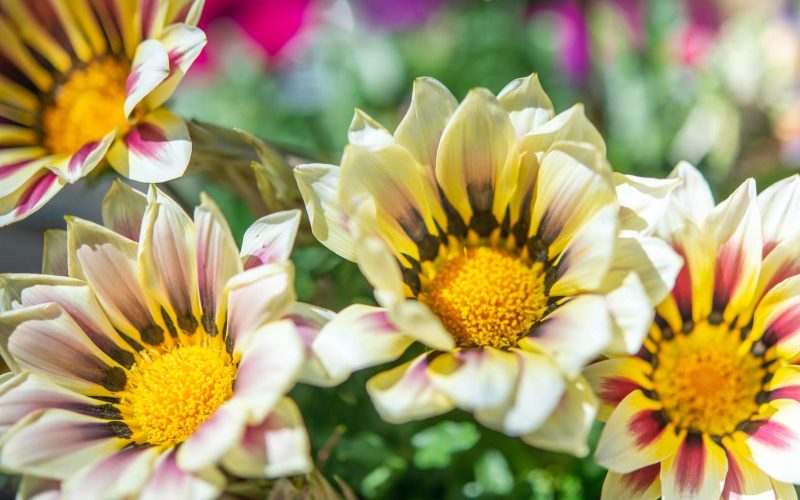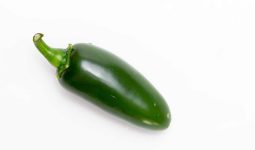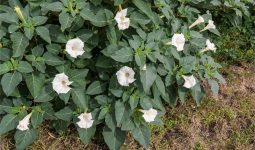Drought, pests, and diseases are generally the first things that come to mind when you think of what might destroy plants.
The best wind tolerant plants help prevent damages caused by wind. The damage caused by wind has the potential to uproot trees, tear up their foliage, and shake their roots.
Some plants can withstand strong winds and improve your home’s curb appeal. Here is a list of the best wind tolerant plants for your garden.
1. Rugosa Rose
Rugosa roses are one of the best wind tolerant plants that can withstand extreme wind conditions in their native environment.
They originated in the colder regions of East Asia, namely the northern part of Japan (35o N) and the Kamchatka Peninsula in Russia (55o N).
An American winter is no match for a plant that can endure the Siberian tundra. There is usually so much blooming when these flowers are in season that they cover almost all the leaves.
Also, they produce rosehips that look like little tomatoes and are delicious when picked and eaten fresh or used to create a jam.
Seeds and irritating hair strands abound, so you may wish to clean them well before eating them.
Rugosa roses are exceptionally resilient to most plant diseases and their tolerance to cold and wind. Some pests, including leafhoppers, spider mites, and caterpillars, may still damage them.
Fortunately, there are non-toxic alternatives to pesticides that may prevent them from harming your flower garden.
2. Leucospermum
The Leucospermum family of South African plants, often known as pincushion plants, prefers windy coastal areas.
As with Protea, Grevillea, Leucadendron, and Banksia, it belongs to the family Proteaceae and is native to South Africa.
Like the Leucospermum hybrid ‘Scarlet Ribbons,’ all produce beautiful flowers that last a long time.
This plant may survive in dry conditions for an extended period, but it does best in well-drained soil that is not too high in nitrates and phosphates.
3. Yew
Yew is often regarded as the backbone of traditional gardens, and it does so by providing vibrant colours throughout the year. Most often, they serve as groundcovers, foundations, or topiaries.
Species of yew resilient in USDA plant hardiness zone 5 are even better since they can withstand the cold and the wind chill that comes with them.
Depending on their size, yews from zones 5-9 may be used as little decorative plants, tall hedges, or massive specimens.
The five-foot-tall maximum height of the Aurescens, Densa, and Repandens species makes them perfect for filler plants or accents among taller varieties.
On the other hand, big yews, which can grow up to 50 feet tall, need extra protection from the wind, so it’s best to put them in a sheltered spot near the home.
It’s important to remember that yew, especially English and Japanese yews, is very poisonous. Research shows they contain taxine, a potentially fatal alkaloid that causes cardiogenic shock.
Use extreme care with these plants, and never put any part of them in your mouth. They are undoubtedly one of the best wind tolerant plants.
4. Daylily
While daylilies aren’t as cold-tolerant as some of the other plants here, they hold up quite well against the wind making them one of the best wind tolerant plants.
Their seeming fragility conceals a strength that allows them to survive in the icy north with little help. On average, a dozen beautiful daylilies will bloom from each stem.
The fact that they smell like their name does have its drawbacks. Daylilies, or Hemerocallis, are a genus of annual flowers that typically only survive a single day from when they open until they wither and die.
However, some later-blooming species may remain beautiful far into the night. Daylilies compensate for this shortcoming by generating many buds during their growing season.
5. Lomandra
These Australian grasses have impressed gardeners and landscape architects with their attractive leaves and remarkable resilience to various environmental conditions.
These include wind, sun, drought, partial shade, and even cold. They are among the best wind tolerant plants for your garden.
Lomandra thrives in warm and cold areas, with plants maintaining their vivid coloration throughout the year, in contrast to certain New Zealand grasses, which might suffer in humid conditions.
Lomandra ‘Tanika’ is popular because of its beautiful green leaves and moderate size (it grows to around 90 centimetres tall and spreads to about one meter).
Nonetheless, there are a variety of additional cultivars available, both big and small, with varying degrees of green-blue or bright lime leaf.
6. Gazania
The ground cover plants known as Gazania are often seen in coastal gardens. As long as there’s lots of sunlight and well-drained soil, they thrive in windy areas.
They produce a multitude of flowers from summer into fall, in colours ranging from creamy white to bright orange, yellow, and red.
Gazania is a low-maintenance plant that can gladly cover banks and rockeries in sunny, windy areas.
7. Sedum
For several reasons, one of which is unusual, sedum has proven to be one of the best wind tolerant plants.
Jokingly, gardeners often refer to sedum as stonecrop due to the plant’s remarkable resilience in the face of almost little care.
Not all sedum species do well in colder areas, even if they may thrive in hardiness zone three. Some sedums may reach three feet; however, most sedums reach little more than three inches in height.
Due to their small height, they provide less of a target for the wind. Sedums are often planted in gardens as a groundcover for other, less tolerant plants, preventing wind from sweeping away the mulch that heats the soil.
8. Witch Hazel
Despite its name, this huge flowering shrub is a herbaceous plant, making it an excellent addition to any garden that experiences cold and wind.
This plant is undoubtedly one of the best wind tolerant plants. The witch hazel, or Hamamelis, is a tree that may reach heights of 20 feet and widths of 10 feet.
Their flowers are striking, with their crimson center and yellow petals radiating like fireworks.
Experts recommend planting a witch hazel seed outside in the spring. It will provide the plant time to strengthen its roots before facing harsh winter winds.
If you take good care of your witch hazel, it will bloom, produce fruit, and display its buds for next year before winter.
9. Bottlebrush
Bottlebrush (Callistemon) is among the best wind tolerant plants that can withstand strong winds as long as they are not excessively salty. To produce healthy flowers requires well-drained soil and plenty of sunlight.
Bottlebrush flowers, which may be white, red, pink, or purple, are favoured by birds for their sweet nectar. The sizes of trees may vary from dwarf to well over five meters.
10. Coreopsis
Whether you know it as mädchenauge or tickseed, this flower is perfect for a sheltered garden since it can withstand strong winds. Coreopsis can survive even the worst winters in hardiness zones four through nine.
The result is an abundance of bright yellow flowers in the springtime, perfect for attracting pollinators like bees.
There is significant debate among gardening experts as to whether or not these flowers should be trimmed in the winter.
Experts say it comes down to individual choice, but they also warn that it’s not always a smart idea.
If your garden has moisture problems, it may be beneficial to leave some dead vegetation on the plants throughout the winter.
However, you should be careful not to trim the coreopsis too much since it may not recover in time for winter.
To keep the stems warm, experts recommend keeping at least two inches of stem exposed and covering them with a thick layer of mulch.
11. Echium
Echium is known for its unique blue, pink and white flower spikes that fly above rosettes of grey-green leaves.
Depending on the species, echium may be shrubs or perennials, and all originate from islands such as Madeira and warmer parts of Europe, Africa, and western Asia.
They’ve developed to survive in hot, rocky, windy regions – for example, New Zealand, where they’ve naturalized on the cliffs of Sumner near Christchurch.
Several species of echium are biennial, meaning their lifespan is two years at most.
12. Manuka
Manuka, or Leptospermum scoparium, is one of the most widespread native plants in New Zealand.
It is very resilient and can thrive in various environments, including windy, wet, cold, and dry environments, as well as in clay soils.
Flowers of the fast-growing manuka plant are visited by bees, butterflies, and even birds.
Numerous attractive manuka varieties are available, ranging from prostrate ground covers to tiny trees with red, pink, or white flowers. It is undoubtedly one of the best wind tolerant plants.








